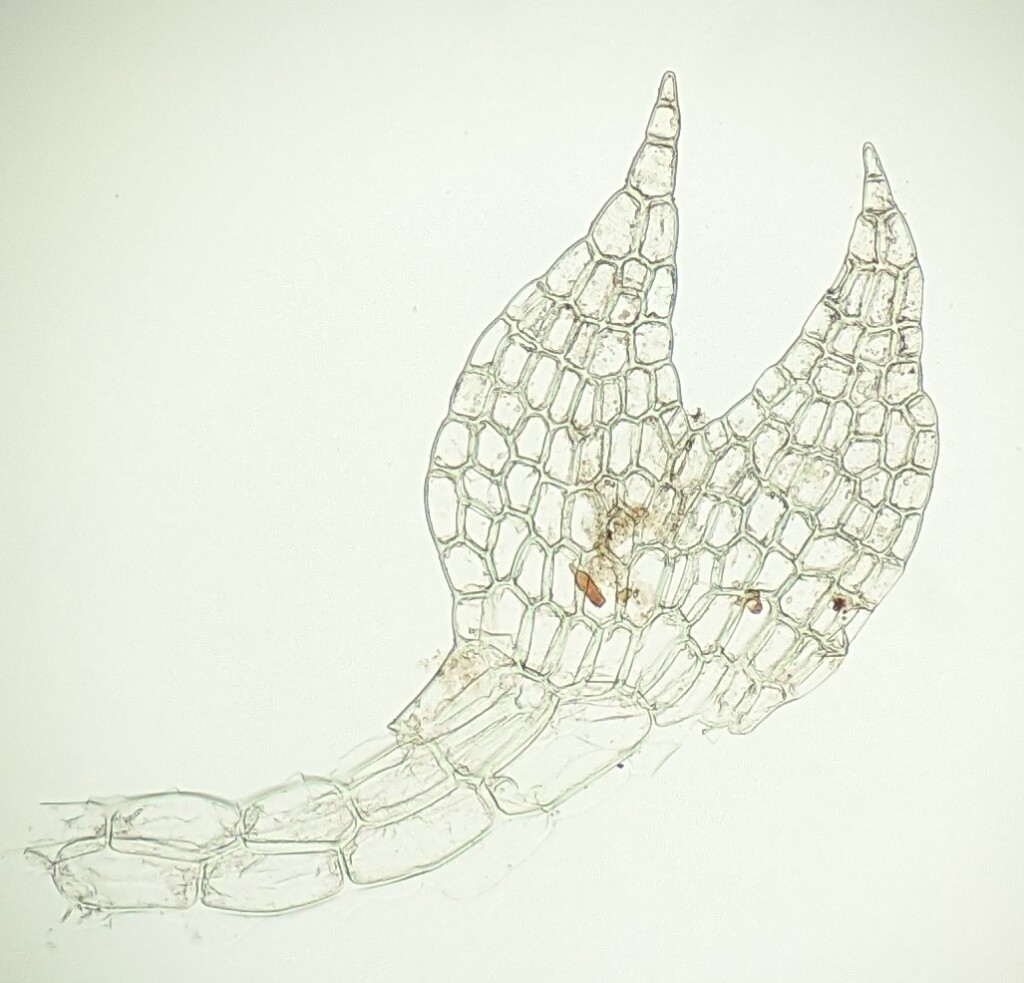Cephalozia drucei
(R.M.Schust.) VáňaDioicous, terrestrial, reddish to purple toward stem apex, white or hyaline toward base. Specialised asexual propagules absent. Branches emerging from main stems abaxial to unlobed lateral leaf and without a collar of tissue at base or from abaxial stem and with a collar of tissue at base. Leaves truncate-ovate to quadrate in outline, bilobed to (0.25–) 0.3–0.5 of leaf length divided by acute to U-shaped sinus, 0.4–1.1 mm long, 0.36–0.87 mm wide, margin entire, concave adaxially, with insertion transverse to weakly succubous in dorsal third, otherwise distinctly succubous, erect-spreading, contiguous to weakly imbricate; lobes triangular, ±equal, acute to acuminate at apex, terminating in a single row of 1–3 cells. Underleaves usually absent or rarely present and vestigial or ovate to elliptic, undivided and entire. Leaf cells oblong to quadrate or polygonal, 20–60 (–100) µm long, (10–) 17–43 (–58) µm wide, evenly thin-walled without trigones or intermediate thickenings, without well-formed oil bodies. Perianth terminal on leading leafy axis, long-ellipsoid or cylindric, c. 2.7 mm long and 0.8 mm wide, trigonous towards apex, with entire to crenulate mouth.
Known in Victoria from a single collection from Cope Creek on the Bogong High Plains. Also New Zealand.
 Spinning
Spinning